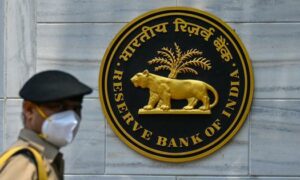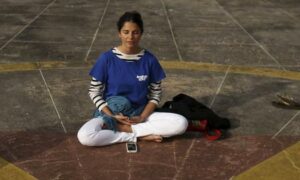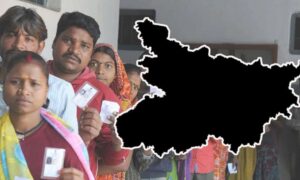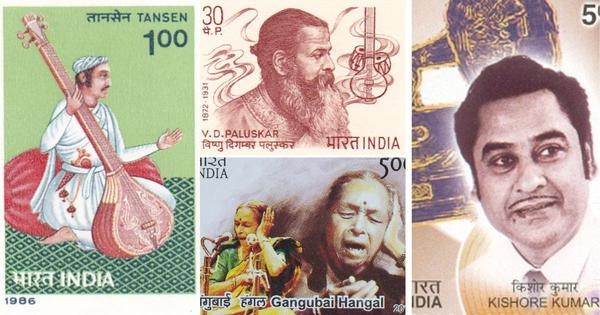
What constitutes Indian music?
The images carried on postage stamps are central in producing, projecting and experiencing the national community. From Mirabai of the Bhakti tradition to Hindi film playback singers and paintings of the Ragmala, India’s postage stamps reflect an evolving imagination of Indian music.
During the 1950s and 1960s, as a part of the process of nation-building, a search began for a “national culture” and efforts were made to project it. The visuals on the postage stamps were one of the many vehicles for this.
The saints, painters, novelists, and poets that were commemorated on stamps give Indians an idea about who the government considered to be key shapers of this national culture.
For a long time, only classical musicians were commemorated on stamps. But since the 1990s, musical themes on postage stamps have become more diverse.
Early years after Independence
The pantheon of Indian culture, as depicted on postage stamps from the 1950s and 1960s, was marked by a lack of musical figures.
These stamps included figures like Meera Bai and Rabindranath Tagore. They had contributed vastly to music, but cannot be called musicians in the conventional sense. Barring a couple of exceptions, musicians were largely absent on Indian stamps till the close of the 1960s.
During the 1970s and 1980s, musical themes expanded on Indian postage stamps. The images make it evident that in the official imagination, Indian music was largely synonymous with classical music. Musicians from other genres found little mention.
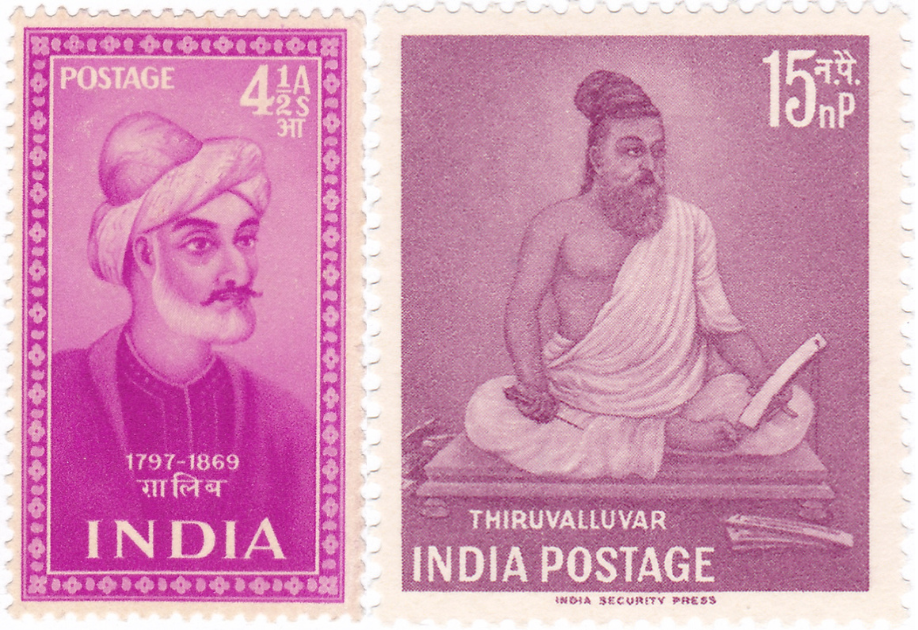
Not only that, the classical musicians who appeared on the stamps were all drawn from the distant past. They were somewhat ancient canonical figures who are credited with catalysing crucial developments in the evolution of the two classical traditions.
Two such musicians from the Carnatic tradition had featured on Indian stamps during the 1960s as exceptions to the general visual absence of musicians during this period: Tyagaraja from Tamil Nadu in 1961 and Purandara Dasa from Karnataka in 1964.
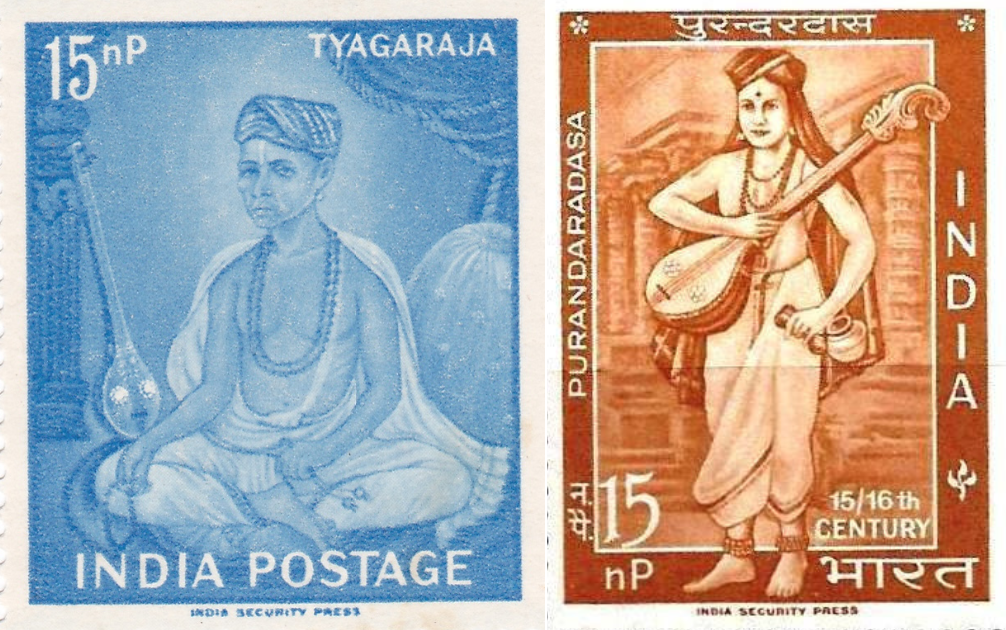
Since the 1970s, more Carnatic musicians found representation on the stamps. Notable among these were two other figures central to the genre: Muthuswami Dikshitar in 1976 and Shyama Shastri in 1985.
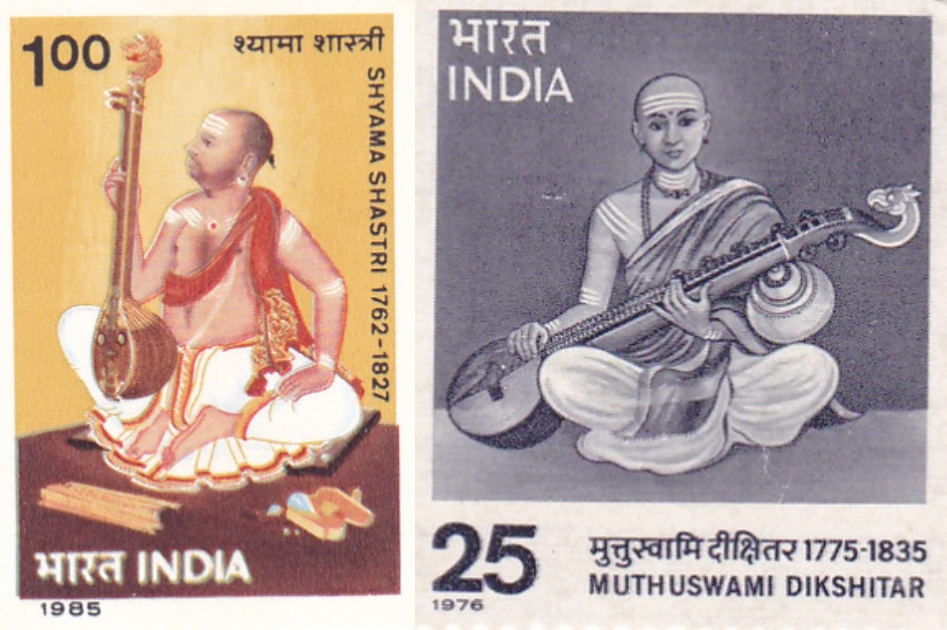
The 1970s also saw stalwarts of the Hindustani classical tradition appearing on Indian stamps for the first time. This began with Vishnu Digambar Paluskar, the Hindustani vocalist and scholar from Maharashtra, in 1973.
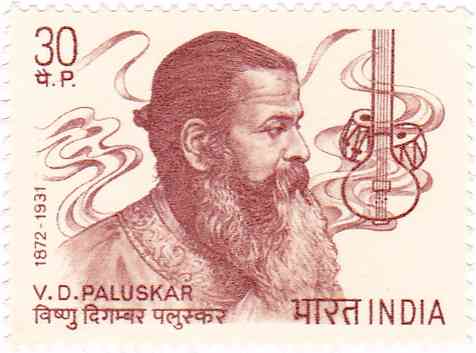
In 1985, a stamp commemorated the 16th-century musician Haridas, followed the next year by another featuring his contemporary Tansen.
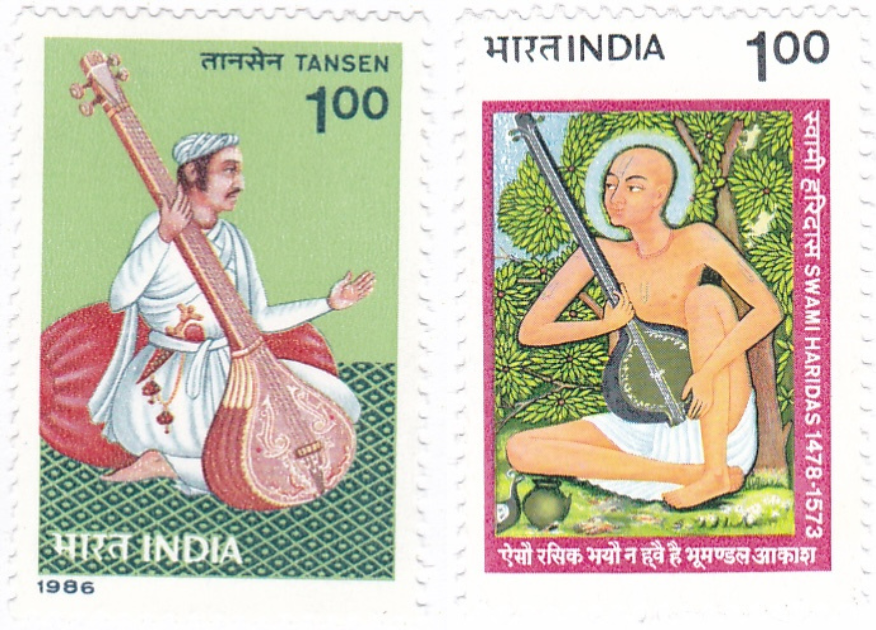
This celebration of Indian music occurred alongside the increasing visibility of other forms of Indian art on postage stamps. Much like music, the official projection of the image of Indian dance focused on the classical forms.
For instance, in 1975, the government brought out a series of stamps featuring “dances of India”: bharatanatyam, odissi, kathak, kathakali, kuchipudi and manipuri. One exception to this emphasis on the classical was Uday Shankar, whose eclectic style was commemorated on a stamp in 1978.
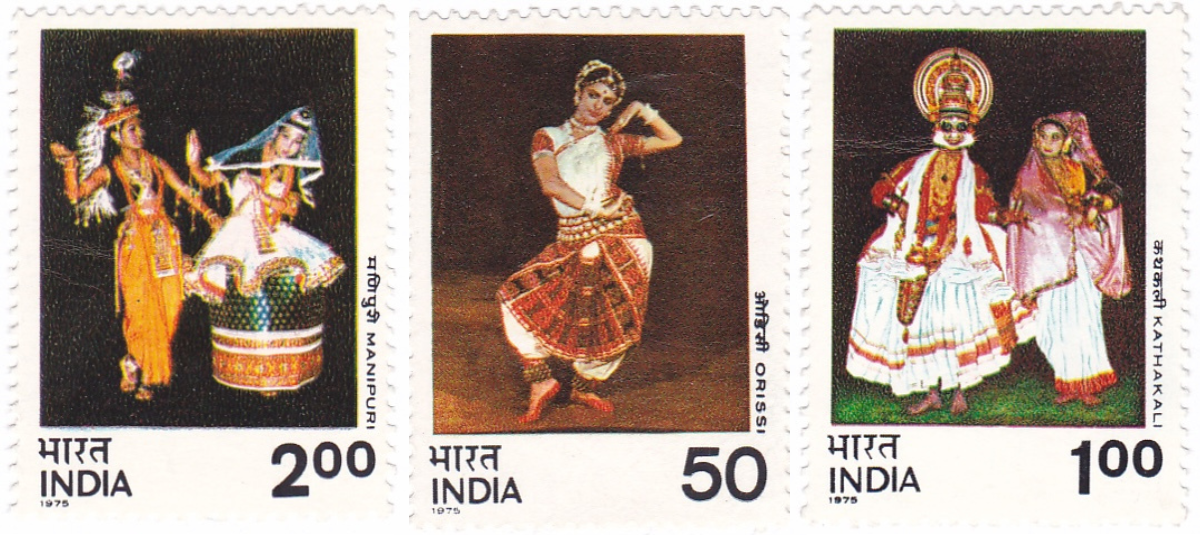
Paintings and painters increasingly began to appear too. A series of stamps from 1978 commemorated modern Indian painters by featuring a painting by each of them. These included the works of Amrita Shergil, Rabindranath Tagore, Jamini Roy and Sailoz Mookherjea, elevating these painters to national status.
A painting by Maqbool Fida Husain appeared in 1982 and one by Nandalal Bose in 1983. On the official space of the postage stamps, these figures and their works defined the contours of a distinctly Indian art.
The 1970s and 1980s also saw a brief cosmopolitan interlude in the depiction of music on stamps. Several stamps of this period featured Western composers. These included Ludwig van Beethoven (1970), Franz Schubert (1978), Johann Sebastian Bach (1985), and George Frederic Handel (1985).
In one of the last stamps of this type, Wolfgang Amadeus Mozart appeared in 1991. Once again, all these musicians were drawn from the classical tradition, albeit of the West.
Film playback singers, regional artists
Two shifts have occurred since the 1990s. Firstly, Indian stamps started featuring musicians from the 20th century. This made the image of music more familiar.
From the Carnatic classical tradition, we find the appearance of figures such as the vocalist Ariyakudi Ramanuja Iyengar (1991) and the violinist Dwaram Venkataswamy Naidu (1993).
Several leading female vocalists appeared on stamps in the early years of the 21st century: MS Subbulakshmi (2005), Veenai Dhanammal (2010), DK Pattammal (2014), and ML Vasanthakumari (2018).
By commemorating many female musicians, and, that too from the recent past, the earlier conservatism around what stamps featured seemed to be loosening up.
Several stalwarts of the Hindustani classical tradition from the recent past also featured on stamps during this period. This included Omkarnath Thakur (1997) and Alauddin Khan (1999).
In the new millennium, the numbers rose steeply with the inclusion of Hafez Ali Khan (2000), Bade Ghulam Ali Khan (2003) and Bismillah Khan (2008).
In 2014, the Indian government published a set of eight commemorative stamps for Indian music. Of these, seven featured exponents of Hindustani music: Vilayat Khan, Ravi Shankar, Mallikarjun Mansur, Kumar Gandharva, Bhimsen Joshi and Ali Akbar Khan. Gangubai Hangal was the only female Hindustani musician to be featured. The eighth stamp featured DK Pattammal, the Carnatic musician and Tamil playback singer.
Secondly, the 21st century finally saw stamps featuring musicians from beyond the world of classical music. This revealed a broadening of the official image of Indian music. Playback singers and composers of Hindi film music came to occupy the pride of place here. This began with Kishore Kumar (2003) and Sachin Dev Burman (2007).
In 2016, the government released stamps commemorating a range of Hindi film singers: Talat Mahmood, Shamshad Begum, Mukesh, Muhammed Rafi, Manna Dey, Kishore Kumar and Hemant Kumar. Geeta Dutt was the only female singer from Hindi films who found a place here.
Musicians from other regions and film industries also started appearing, albeit in smaller numbers. They included the Telugu singer Ghantasala (2003), the Assamese vocalist Bhupen Hazarika (2016) and Tamil singer TM Soundararajan (2016).
A cluster of Bengali performers of Tagore’s music were commemorated as well. These included Shantideb Ghosh and Kanika Bandyopadhyay in 2002 and Pankaj Kumar Mullick in 2005. These new stamps finally acknowledged the richness and diversity of the world of Indian music beyond the classical traditions.
The past in the present
Among those featuring musical themes, two sets of thematic stamps from the 1990s stand out. In 1996, the government brought out a series of four stamps on the Ragamala paintings. They displayed four painted works depicting scenes evoking ragas corresponding to the four seasons of spring, summer, monsoon, and autumn.
Until then, music had appeared on stamps only in terms of musicians. These thematic stamps were possibly meant to highlight the connection of the music of the present times with the rich musical pasts, especially with reference to the tradition of providing evocative visual metaphors for music in paintings.
In 1998, another set of four stamps were dedicated to the celebration of musical instruments: the rudra veena, flute, pakhawaj, and sarod. In the background, they bore images of friezes, presumably from the walls of old temples. They depicted male and female figures engaged in musical performances on the modern instruments that the stamps foreground.
By connecting the instruments of the present with the figures of the past, these stamps emphasise the antiquity of India’s musical traditions.
It was in one such thematic series that Indian stamps in 2020 finally accommodated folk traditions. Before this, only Allah Jilai Bai from Rajasthan and Lalan Fakir from Bengal had been commemorated – in 2003.
In 2020, a new series focused on six folk instruments: the ravanahatha, surando, algoza, burrakatha, kamaicha, and ektara. The stamps feature musicians playing these instruments in rural settings. By incorporating a variety of popular musical traditions, they contributed to expanding the definition of Indian music in the world of postage stamps beyond urban classical, art or film music.
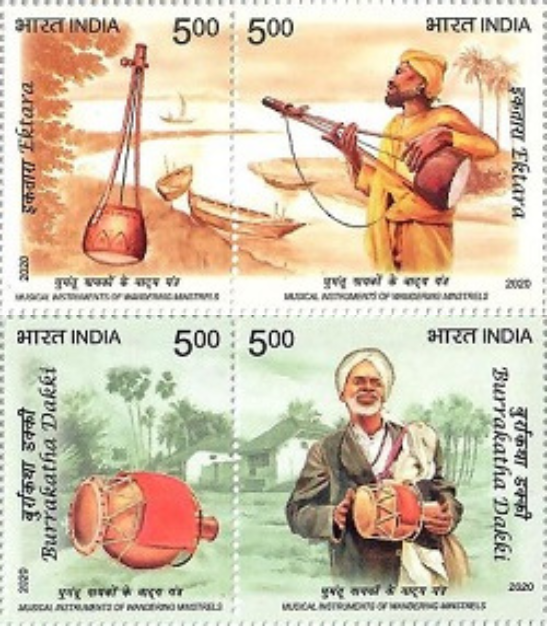
What caused these shifts? No doubt, factors such as changing government attitudes, lobbies within official circles, pressure groups from various states, advocates for certain figures or causes, cultural movements on the ground and the social remembrance of past icons influenced what was to be commemorated.
The stamps reveal the gradual expansion of the idea of Indian music, as if to mirror that of the Indian nation itself.
The author sincerely thanks Naisha Shetty for drawing his attention towards musical themes on Indian postage stamps and for collecting these images.
Pratyay Nath is Associate Professor of History, Ashoka University. His co-edited book, The Coveted Mount: The Horse in South Asian History, is forthcoming from Cambridge University Press.
This article first appeared on Scroll.in
📰 Crime Today News is proudly sponsored by DRYFRUIT & CO – A Brand by eFabby Global LLC
Design & Developed by Yes Mom Hosting


